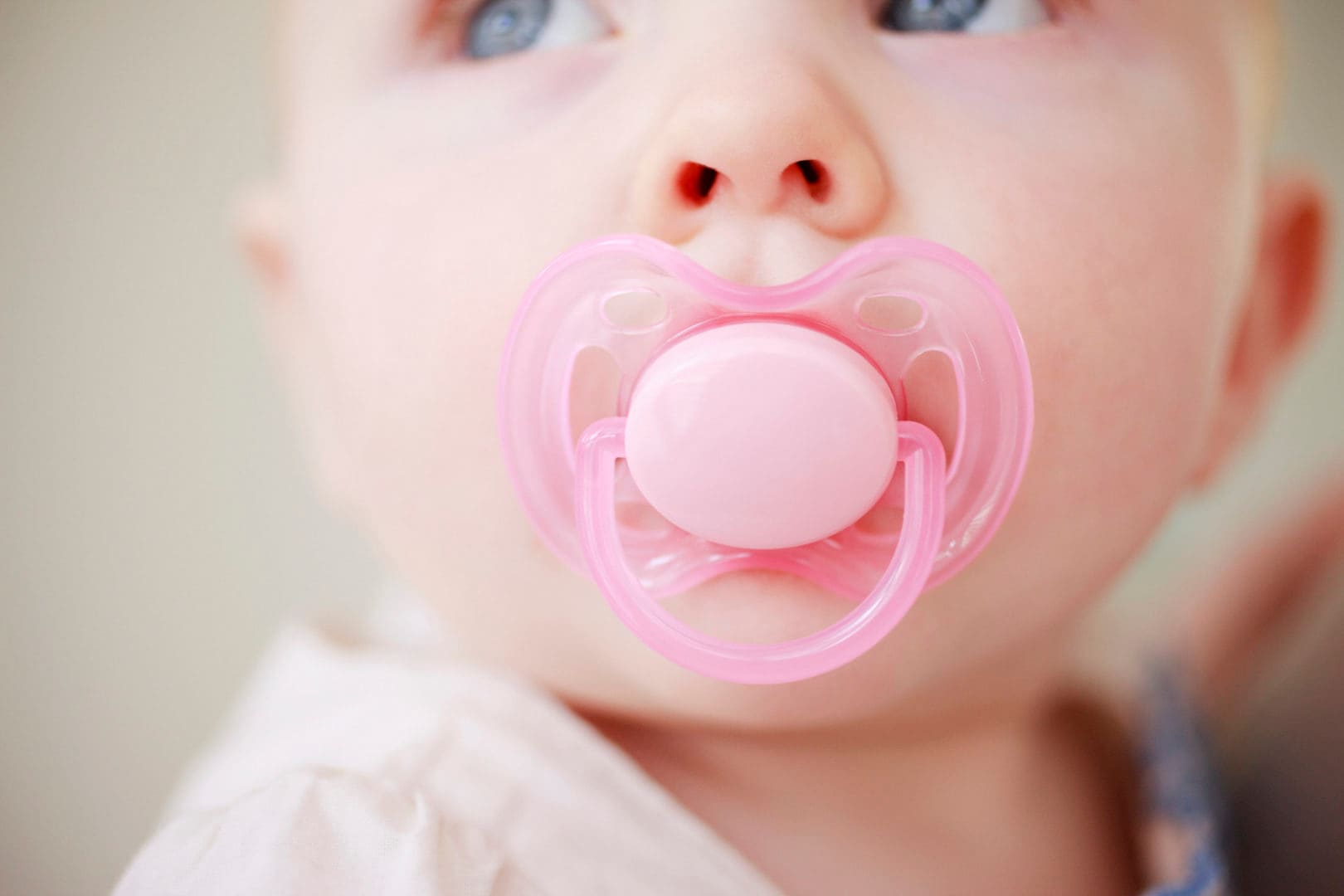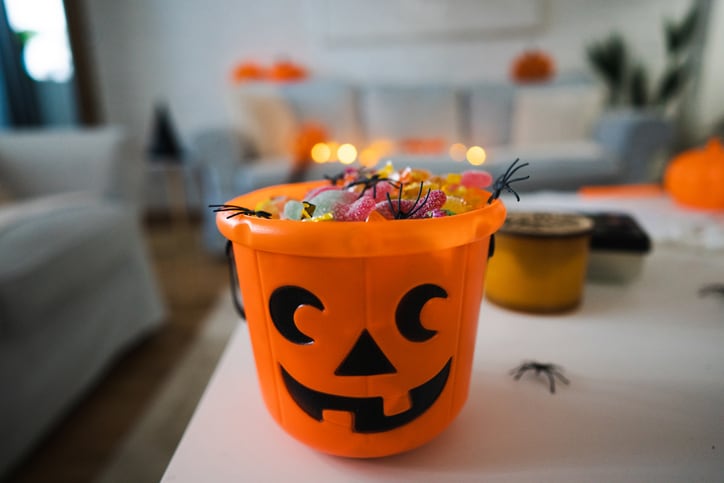Whether you call it a binkie, a pacie or a dummy, many parents report that finding the pacifier that appealed to their little one was a highly individual process. What one baby takes to right away, another might reject over and over again.
“Honestly, every baby is different in what they will take and like,” says Lindsay Prior, an infant/toddler teacher with Children of America and mom of two from Orland Park, Illinois. “I have known babies to not take a pacifier, babies that only like a specific brand and babies that will take any pacifier.”
It can also be a bit of a battle navigating mixed messages parents receive about pacifiers’ necessity and safety. Here’s what parents and experts have to say on the basics of pacifier use.
Are pacifiers safe?
“With pacifiers, as with most things, it’s always an issue of risk versus benefit, as there are definitely both benefits and concerns about pacifier use,” says Dr. Catherine Gritchen, a pediatrician at MemorialCare Medical Group in Long Beach, California.
A couple pacifier pros:
“Though the reasons aren’t completely clear, pacifier use is associated with a strong decreased risk of sudden infant death syndrome (SIDS),” Gritchen says. “Pacifiers can also provide a healthy outlet for the normal developmental need of ‘non-nutritive’ sucking.”
And possible pacifier cons:
“Pacifier use is associated with an increased risk of oral candida, or yeast infection, tends to be associated with decreased breastfeeding [and] is associated with many malocclusion or dental-related abnormalities,” Gritchen says.
More specifically, the American Dental Association (ADA) explains that “pacifiers can affect the teeth in essentially the same way as does sucking on fingers and thumbs,” which “may cause problems with the proper growth of the mouth and the alignment of teeth.”
When should you introduce a pacifier?
The timing with which you introduce a pacifier can make a difference in not only how quickly your child will take to it, but also in how it might affect nursing habits.
“For mothers who desire to breastfeed, it’s generally recommended to wait until after 3 to 4 weeks of age, when breastfeeding is well-established,” says Gritchen. “However, it is also recommended to introduce early — so right at 3 to 4 weeks for breastfeeders — to decrease the risk of SIDS.”
What makes a good pacifier?
The best type of pacifier for your child is “the one that your child likes — but not too much,” warns Gritchen, pointing to the aforementioned risks of long-term use, like dental malocclusion.
But you’ll also do well to choose one that has particular safety and convenience features.
Dr. Tsvetelina Velikova, expert with MedAlertHelp.org, advises parents look for a pacifier that’s silicone, free of bisphenol-A (BPA), made from a single molded piece of plastic, silicone or latex (which will minimize choking risk), dishwasher-safe and fits your baby’s mouth.
Be sure to choose a pacifier that has has ventilation holes to allow air to pass through the pacifier as the baby sucks on it. This “decreases pressure that is inflicted on the palate and developing teeth,” according to Dr. Misee Harris, a pediatric dentist and the founder of Project Smile.
Different features — like a flat nipple — may appeal to your little one, depending on their feeding habits.
“We were told that the pacifiers with a flat nipple (like MAM) are best for breastfeeding babies because it helps them keep the same suckling action they would use when nursing,” says Samantha C., a mom of two from Hilliard, Ohio.
You may also be intrigued by pacifiers that are advertised as orthodontically designed, but Gritchen says that “there are studies that show that there is no clear difference between orthodontically-designed pacifiers versus more traditional pacifiers.”
Here are 10 of the best pacifiers, as recommended by experts and moms:
|
Best for: |
Pacifier name |
Price/store |
|
|
1 |
All-around |
$7, Amazon |
|
|
2 |
Newborns |
$14, Target |
|
|
3 |
Newborns |
$15, Amazon |
|
|
4 |
Newborns |
$5, Amazon |
|
|
5 |
Breastfeeding Babies |
$6, Amazon |
|
|
6 |
Breastfeeding Babies |
$5, Target |
|
|
7 |
Breastfeeding Babies |
$6, Amazon |
|
|
8 |
Toddlers/babies with teeth |
$12, Amazon |
|
|
9 |
Toddlers/babies with teeth |
Tommee Tippee Closer to Nature Night Time Orthodontic Infant Soother Pacifier |
$6, Amazon |
|
10 |
Toddlers/babies with teeth |
$8, MAM |
Now read more on why these pacifiers made the list.
Top pick

Velikova likes the MAM Perfect Baby Pacifier, as do many moms.
“Both my boys would only use MAM pacifiers, and they make different ones that ‘grow’ as your baby does, so they have little teeny ones for newborns,” says Meg J., a mom of two from Allentown, Pennsylvania.
Where to buy: MAM Perfect Silicone Pacifier ($7, Amazon)
Best pacifiers for newborns

For a new arrival, parents may want to consider the WubbaNub, Velikova says. It’s loved for its one-piece, easy-to-grasp, medical-grade silicone construction that’s free of BPA, phthalates, PVC and latex. It’s also distributed in hospitals, NICUs and well-baby units nationwide.
“WubbaNub for the win!” Nadima Z., a mom of one from New Lenox, Illinois, says.
Where to buy: WubbaNub Infant Pacifier ($14, Target)

Velikova also likes the Philips Avent Soothie Pacifier. Thanks to its rounded nipple shape, the Soothie is considered one of the best for breastfeeding babies under 6 months.
It’s also a hit with parents.
“My daughter loved the Soothie pacifier,” Brianna D., a mom of one from West Long Branch, New Jersey, says. “We didn’t intend to have her use one, but the hospital had given her one during the extra night she had stayed over. We fondly called it the mute button until one day, eight weeks later or so, when she decided she was done with it and any and all pacifiers. Of course, that was the day after I decided to invest in many more Soothies!”
Misha B., a dad of one from Pasadena, California, agrees the Soothie was best when his daughter was a newborn and offers a benefit for mom and dad, too.
“It’s the most comfortable for the parents when you’re holding the binky in the baby’s mouth,” he says.
Where to buy: Philips Avent Soothie Snuggle Pacifier ($15, Amazon)

Meanwhile, moms who are bottle-feeding their new arrivals are fans of Dr. Brown’s HappyPaci 100% Silicone Pacifier.
“I loved the Dr. Brown ones, because the nipple is identical to the bottles we used,” says Julia E., a mom from Montreal, Canada. “Helped my son learn to take a bottle!”
Where to buy: Dr. Brown’s HappyPaci 100% Silicone Pacifier ($5, Amazon)
Best pacifiers for breastfeeding babies

Colleen K., a mom from Elmhurst, Illinois, swears by the nanobébé Flexy Baby Pacifier.
“I bought bottles that are intended for use for moms who are also breastfeeding — and the pacifiers came with it,” she says. “They’re awesome.”
Her favorite aspect is the ergonomic design that fits more comfortably against a baby’s mouth.
Where to buy: nanobébé Flexy Baby Pacifier ($6, Amazon)

The NUK Orthodonic Pacifier is another one breastfeeding moms love. It gets rave reviews for its natural shape, which is modeled after a nipple, which could preempt nipple confusion for nursing little ones.
“My first only liked the NUK,” says Billie S., a mom of two from Los Angeles.
Where to buy: NUK Newborn Orthodontic Pacifier ($5, Target)

Another NUK model that is recommended for nursing babies is the Nuby SoftFlex. The pacifier is designed to give babies a “natural flexing action imitates the motion of mother’s nipple during feeding.”
Where to buy: Nuby 2-Pack SoftFlex Orthodontic Pacifier ($6, Amazon)
Best pacifiers for toddlers/babies with teeth

Velikova recommends the textured RaZbaby RaZ-Berry Silicone Teether for toddlers or babies who could use extra soothing of teething pain. Melissa R., a mom from Brooklyn Park, Minnesota, confirms the RaZbaby “has been amazing for teething.”
Where to buy: RaZbaby RaZ-Berry Silicone Teether ($12, Amazon)
Another one she likes that may be particularly useful at bedtime: the Tommee Tippee Closer to Nature Night Time Orthodontic Infant Soother Pacifier for little ones who are up to 18 months. The pacifier sports a symmetrical orthodontic shape meant to support a child’s oral development.

Where to buy: Tommee Tippee Closer to Nature Night Time Orthodontic Infant Soother Pacifier ($6, Amazon)

MAM Original Pacifiers are also designed for little ones who are 16+ months and coping with teething pain.
“My son is 18 months old, and he is cutting the last two 2-year-old molars right now,” says Jeny M., a mom of one from Chicago. “The pacifier seems to help him with that pain. We went a long time without pacifiers and have given in to them again recently at bedtime and when he’s fussy because of the teething.”
Where to buy: MAM Original Pacifiers 16+ Months ($8, ShopMAMBaby.com)






